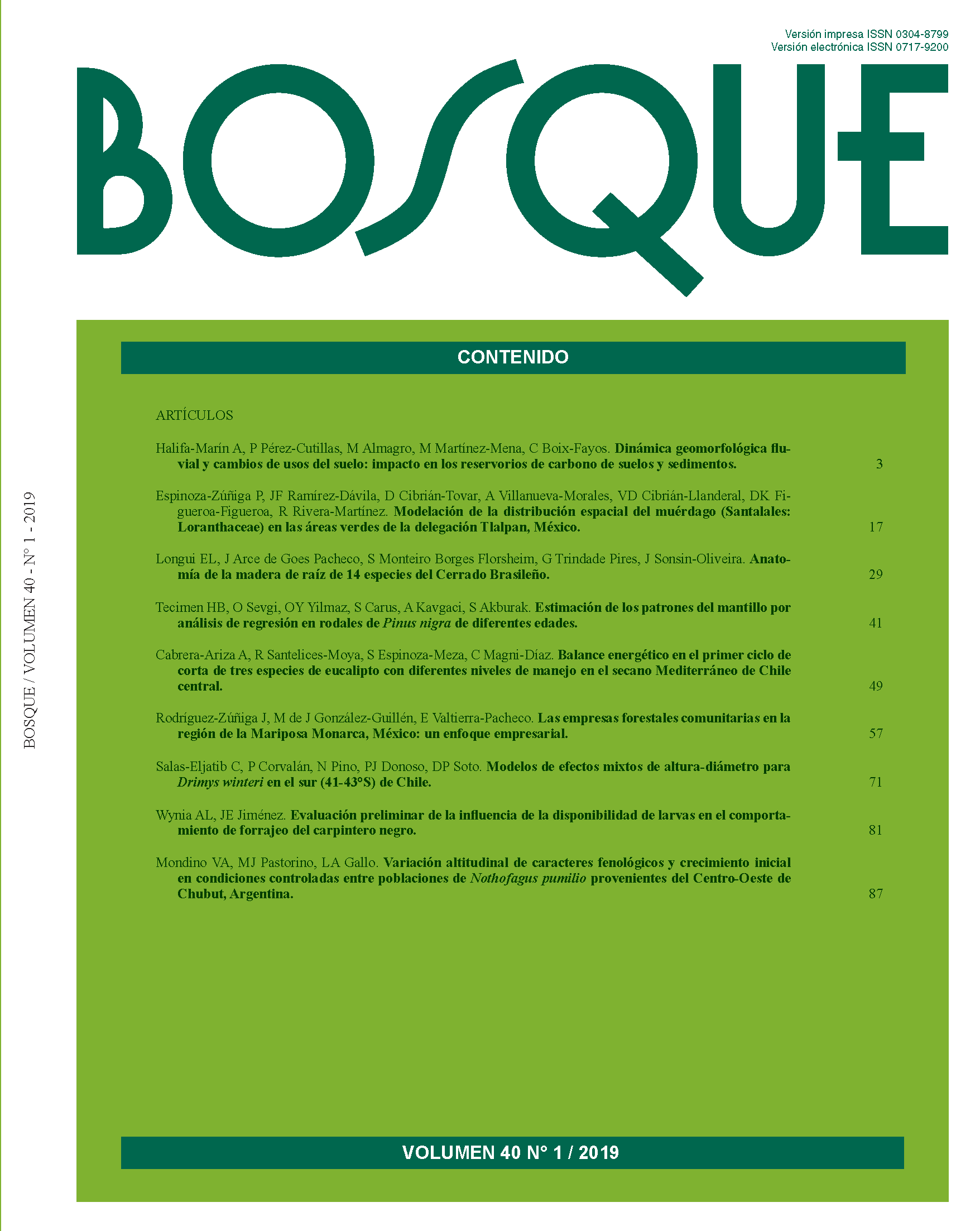Fluvial geomorphological dynamics and land use changes: impact on the organic carbon stocks of soil and sediment
Main Article Content
Abstract
The drainage basin of the Turrilla river (SE of Spain) went through important land cover changes since 1950s; from mainly an agrarian scenario in 1956 to other depopulated and forested in 2015. This study analyzes the effects of land use changes on fluvial dynamics and their relationship with the organic carbon (OC) stock in fluvial sedimentary deposits as well as in the soil of the basin. Methods included a fluvial geomorphological analysis and a land use change analysis in combination with OC databases of soil and sediment. Results showed that the fluvial channel experienced important morphological changes related to different erosion processes and stabilization of fluvial deposits, induced by land use changes in the drainage area. The active channel decreased 63 % in the study period, while bank erosion and gully erosion increased (34 % and 21 %, respectively). Alluvial fans and alluvial plain were also extended (21 % and 7 %, respectively) and alluvial bars were colonized by vegetation. Sediment was impoverished in OC compared to catchment soils (0.24 enrichment ratio sediment/soil). However the increase of OC stock (Mg ha-1) was very similar between soil (25 %) and sediment (23 %). The total reservoir of OC (Mg) increased 27 % in sediments and 25 % in the catchment soils. Results show the large influence of geomorphological dynamics on the OC reservoir at the catchment scale. A very high potential of fluvial sediments to increase OC sinks was observed, particularly in scenarios where the active channel is narrowed and the fluvial channel is encroached with vegetation, facilitating the input of OC in sediment. The potential of sediment to sequester organic carbon could be very useful in planning and management of fluvial sedimentary zones in climate change mitigation policies.

